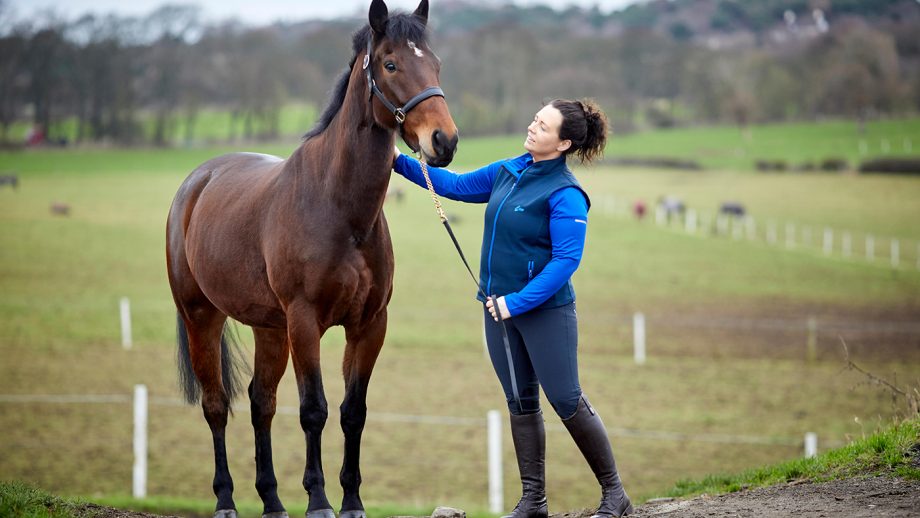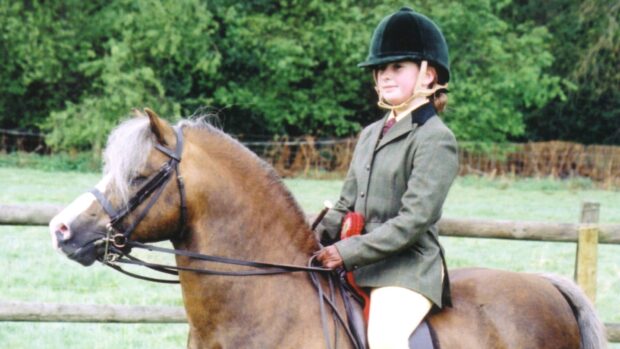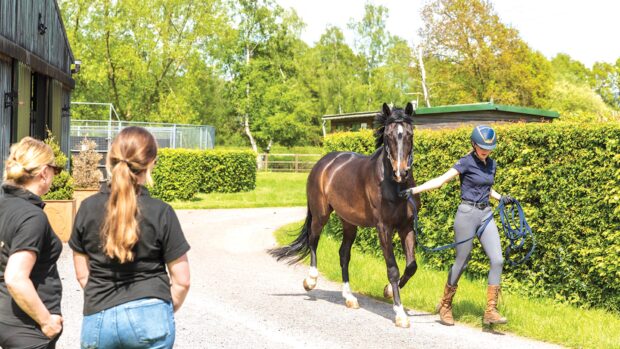If you are hoping to buy a Welsh section B pony, this guide with advice from a top breeder should help you start your search for the right one
What is a Welsh section B?
The Welsh section B pony is one of the four Welsh breeds. It is the finer and arguably most athletic of the sections. The section B cannot exceed 13.2hh (137.2cm) in height but you regularly see smaller breed representatives out and about.
According to the Welsh Pony and Cob Association (WPCS): “The general description of ponies in section A of the stud book is applicable to those in section B. But more particularly the section B pony shall be described as a riding pony, with quality, riding action, adequate bone and substance, hardiness and constitution and with pony character.”
They can be described as the more refined and taller version of the section A. The B was developed by breeding mountain ponies with Hackney, Arab and thoroughbred influences.
The section B was added to the stud book in 1931 and the WPCS provides the same breed standard as the section A with the above characteristics:
Head: Small, clean-cut, well set on and tapering to the muzzle
Ears: Well placed, small and pointed, well up on the head, proportionately close
Neck: Lengthy, well carried and moderately lean in the case of mares, but inclined to be cresty in the case of mature stallions
Shoulders: Long and sloping well back. Withers moderately fine, but not “knifey”. The humerus upright so that the foreleg is not set in under the body.
Forelegs: Set square and true, and not tied in at the elbows. Long, strong forearm, well developed knee, short flat bone below knee, pasterns of proportionate slope and length, feet well-shaped and round, hoofs dense.
Back and loins: Muscular, strong and well coupled
Hind quarters: Lengthy and fine. Not ragged or goose-rumped. Tail well set on and carried gaily.
Hind legs: Hocks to be large, flat and clean with points prominent, to turn neither inwards nor outwards. The hind legs not to be too bent. The hock not to be set behind a line from the point of the quarter to the fetlock joint. Pasterns of proportionate slope and length. Feet well-shaped, hooves dense.
They have straighter, more low and long striding movement than the A, C and D sections arguably with a more pointed toe, though they still need to have appropriate hock action from behind.
What should I look for in a Welsh section B?
Hayley Grota runs the successful Cadlan Valley Stud alongside her parents, Howell and Yvonne Davies. Hayley’s daughter, Libby, currently competes the home-bred ponies under-saddle.
Ponies with the Cadlan Valley prefix have won at the Horse of the Year Show (HOYS), Royal International and Olympia.
“Conformation and breed type are the most important things to look for in a quality Welsh section B,” says Hayley. “I like a section B to possess Welsh pony characteristics, too, as well as plenty of substance and limb, two things a lot of ponies have lost over the years, which in turn has meant they’ve lost some of their hardiness.
“Today, a lot of Bs are weak in their hind legs; they move in front but they don’t move from behind. I like a pony to really use itself from the back end. Adding to this, I would never buy a section B that looks like a show pony, unless you intend it for this class; I like a pony with substance, limb and bone.”
What can I do with a Welsh section B?
Welsh section Bs are versatile and they can fare well in multiple jobs due to their athleticism and level temperaments.
Welsh section Bs have their own final at Horse of the Year Show. Sometimes they compete against Welsh section As or against other small breeds.
Many modern section Bs are also successful in plaited showing classes, standing at the top of show hunter pony and plaited working hunter pony line ups at championship level.
Smaller section Bs can make good first ridden ponies, and the breed is also a popular choice for native working hunter classes due to their natural scope and stamp.
“Welsh Bs are highly popular, both in the UK but especially in the USA,” Hayley notes.
Where should I buy a Welsh section B pony from?
There are online sale sites such as Whickr that have Welsh section B ponies advertised throughout the year.
“I advise you to do research into certain bloodlines and types that you like,” Hayley says. “Buying direct from a breeder, especially if you are looking for a youngster, is a good way of sourcing exactly what you want. Do your research and look at the back breeding of certain ponies you like that are out and about on the circuit.
“Usually, good families pass on their temperaments, which is ultimately the most important thing if you’re looking for a ridden pony. For example, if we had a stallion that didn’t have the best attitude we would not use him again.”
How much should I expect to pay?
As with all breeds and types of horses and ponies, the price you will be looking to pay for an animal will depend on your own personal budget, the competition CV of said horse or pony and the level of the sales market at the time.
“A two or three-year-old Welsh section B pony that is nice but that is not going to be a world beater could still fetch anything from between £2,500 to £3,000,” Hayley says. “If you have a youngster that is a bit more special then you’re looking at prices from £5,000 upwards, especially if the pony has done some winning in-hand.
“When it comes to older ponies with competition records they can go for anything over five figures. I have spoken to people who have sold HOYS-level Welsh section B ponies for up to £25,000. I do think breeders will sometimes sell ponies for less money, especially if they know the home is knowledgeable.”
I’ve bought a pony, now what?
It is time to organise a pre-purchase vetting, something that is strongly recommended. If the pony is for a child, perhaps asking for a trial period would be sensible, but not all sellers will agree to this.
It’s important to let the vet know prior to the vetting what you intend to use the pony for so they can assess it accordingly. If you tell the vet that you want the pony for the show ring, they should hopefully inform you of any blemishes or conformational faults which could impact its future career, even if they don’t impact its soundness or performance.
If the pony is for a child, the vet will hopefully keep an eye on the temperament during the assessment, too. Small ponies can be more susceptible to laminitis so ask the vet to consider this risk.
“We have been doing this long enough that we don’t tend to have unbroken ponies vetted as we can look at their teeth and limbs, and we have a friend who is a vet who is always willing to provide advice on certain aspects I might be worried about,” Hayley says. “I know people who have had ponies vetted and something has gone wrong later down the line, and I’ve also known ponies that fail the vet but have gone on to be great with no issues.”
- To stay up to date with all the breaking news from major shows throughout the season, subscribe to the Horse & Hound website
You may also be interested in:

From the diminutive Shetland to the spectacular Welsh cob – meet Royal Windsor’s 2025 M&M champions

Native breed experts pinpoint 6 core skills for your pony to be light, forward and responsive in the ring this season

Welsh-bred section B stallion triumphs at Horse of the Year Show in South Africa

Buying a horse: Horse & Hound’s ultimate step-by-step guide

Subscribe to Horse & Hound magazine today – and enjoy unlimited website access all year round




